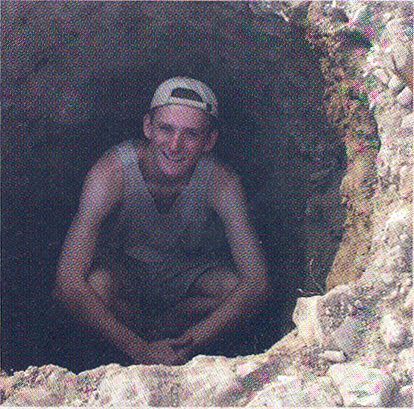Flanders Field in Northern Israel: A Hazor Volunteer’s Story
Sidebar to: Guide to Sites

I am an archaeology student, yet I’ve always felt that archaeologists are rather odd. They see houses and walls where other people see piles of stones. They scribble and babble among themselves in languages that the living no longer remember.
Despite their peculiarities, however, I always knew that I wanted to be an archaeologist. As I see it, they have two jobs. First, they must summon from soil, pottery and other debris an understanding of long-lost civilizations. Second, by telling us something about the achievements and failures of the past, archaeologists help us gauge the capabilities of our modern world.
If you have heard how hard dig volunteers work, you may wonder why anyone would be foolish enough to do this sort of thing. But it can also be fun. In what other line of serious scientific research do you get to race up a mound of rubble pushing a wheelbarrow? Or smash big rocks with a hammer? And the teamwork this kind of enterprise requires is phenomenal. Volunteers of every age and background come from around the world, all for the same purpose. They have heard of the marvels of the past and want to see them with their own eyes.
Already a library member? Log in here.
Institution user? Log in with your IP address.

